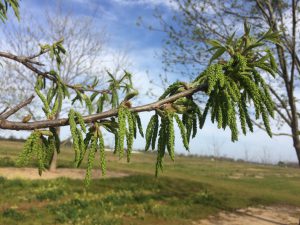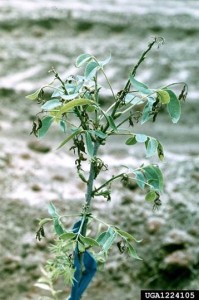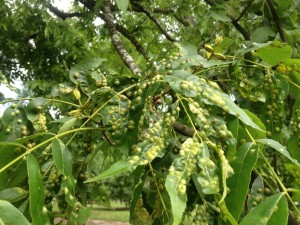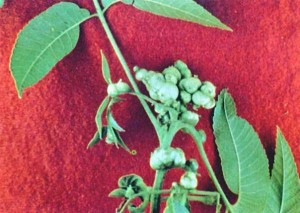 Budbreak on ‘Cape Fear’ pecan, March 25, 2017
Budbreak on ‘Cape Fear’ pecan, March 25, 2017
Budbreak has arrived in pecan orchards throughout Georgia. This puts our budbreak timing pretty close to last year thanks to the cooler weather of a couple of weeks ago. It seems that we narrowly missed serious damage from the freeze that occurred; however, we won’t know for sure until at least May or June. I expect that we will have some damage to young trees here and there in which the sap had started moving but we will have to wait and see. Even though budbreak has begun, I am concerned that it will be somewhat uneven as a result of the warm winter. If so, pollination could be affected. With the arrival of budbreak the growing season begins and there are several things to keep in mind.
It has been abnormally dry in south Georgia for several weeks now and as the trees wake up they will need some water. Mature trees should be irrigated at 17-18% of full capacity at this time. Young trees in the 1-3 year old range need about 4 hrs every other day throughout the season beginning now. Rain is in the forecast for Friday so if you receive a 1″ rain or more, turn the irrigation off for 3 days.
Be on the lookout for budmoths in young trees. They begin feeding soon after budbreak and can destroy the buds making it difficult to establish a good central leader. Treat with chlorpyrifos, a pyrethroid, Intrepid, or Dimilin as needed.
Phylloxerra damage was particularly severe last year. If you plan to treat for Phylloxerra, do so now for those varieties that have started to break bud. These treatments have to be made as soon as possible when budbreak begins or you will miss the window for treating them. Chlorpyrifos or imidacloprid are the materials of choice.
Pecan phylloxerra damage on foliage (left) and stem phylloxerra damage on terminal (right).



